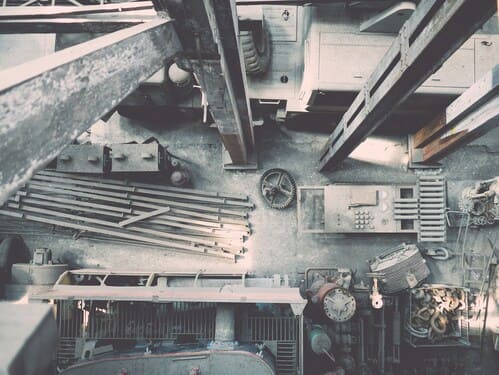FBG sensors are used to monitor structures made of various materials, including concrete and metals. In particular, we are talking about structures that usually consist of metals such as aluminum, steel, copper, etc.
Concrete Constructions’ Main Issues
Reinforcement plays a major role in concrete structures. Its strength and durability can affect the appearance and growth of the cracks. One of the reasons for such a degradation is corrosion.
Corrosion occurs when a substance reacts with its surroundings, resulting in the material’s consumption or contamination by an environmental component. Corrosion can reduce the life and load-bearing capacity of a structure. Due to the chemical reactions caused by corrosion, it may change the reflection of the steel surface. The thicker the material, the more it will be subject to deformation. Here, structural health monitoring (SHM) delivers the results.
Structural Health Monitoring (SHM) is an important tool used to monitor the occurrence of corrosion. It is effectively used in constructions to detect and prevent any possible damage. Early corrosion monitoring is essential. Corrosion is dangerous because it causes high costs to repair, and it takes some time to be discovered. In the most extreme cases it can bring the collapse of the complete structure.
Types of Corrosion Monitoring Devices
Today, there are a number of inspection technologies that have been developed specifically for the purpose of detecting damage to constructions. These methods include acoustic emissions, ground penetrating radar systems, electromagnetic techniques, etc. However, they all have their shortcomings including susceptibility to electromagnetic disturbance and lack of continuous structural health monitoring.
Fiber optic sensors are an effective solution for structural health monitoring. They provide real-time monitoring and low-cost techniques that monitor and control the corrosion appearance. There are a variety of fiber optic solutions available such as fiber Bragg grating sensors, FBG interrogators, distributed sensing systems, etc.
Corrosion conditions may vary due to their structure. Therefore, there is a need for a great number of point sensors. This is where distributed fiber optic sensors really come into their own.
Fiber Optic Sensing for Structural Health Monitoring
FBG sensors are used as instruments for corrosion detection. Like any standard sensor, fiber optic sensors are built into the structure to collect all the data and transmit it to the unit. They directly or indirectly measure vibration, displacement, humidity, temperature and chemical changes. FBG sensors are divided into several types due to the parameters they measure: displacements, strain, temperature, etc. By displaying this data, they are able to predict the occurrence of corrosion and its future consequences.
Here is a list of the major features of the FBG sensors:
- Portability;
- High accuracy;
- Simplicity;
- Long life;
- Easy to integrate;
- Electromagnetic interference and corrosion resistance;
- Ability to operate in harsh environments, etc.
FBG sensors are particularly indispensable for monitoring corrosion in the hidden areas that are usually inaccessible to specialists. Their compact size allows for high accuracy and resolution. However, fiber optic sensors do not detect corrosion appearance directly but by estimating the material layer deposited on an optical fiber. That’s why they should be located close to the structure, in the same conditions.
FBG sensors have shown promising future in interaction with the concrete structures. This expands the horizon of their applications, including critical facilities and civil engineering.
Optromix is a fast-growing vendor of fiber Bragg grating (FBG) product line such as fiber Bragg grating sensors, for example, FBG strain sensors, FBG interrogators and multiplexers, Distributed Acoustic Sensing (DAS) systems, Distributed Temperature Sensing (DTS) systems. The company creates and supplies a broad variety of fiber optic solutions for monitoring worldwide. If you are interested in structural health monitoring systems and want to learn more, please contact us at info@optromix.com

